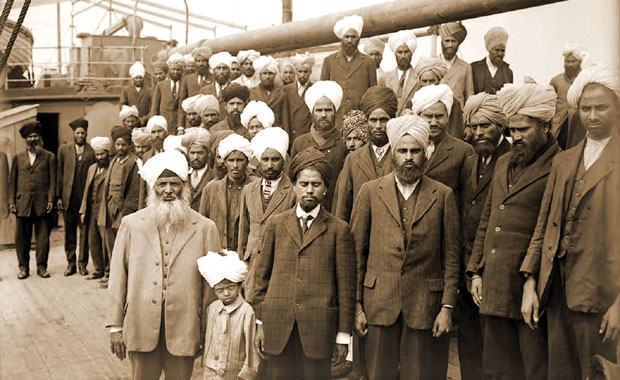Centenary of Komagata Maru Tragedy
The ship that changed the course of Indo-Canadian history
Komagata Maru was a ship that took 376 Indians to Canada in 1914 to challenge the racist Canadian law. The passengers had taken the voyage in search of economic opportunities. They were connected neither with the Gadar Party nor with any other freedom movement. On reaching Vancouver, they were not allowed to land and were forced to stay on the ship for two months, sometimes without food and water. They were unhappy, some even rebellious at the unjust verdict of the highest Canadian justice court. The British Indian Government considered the passengers not as opportunity seekers but anti-British freedom fighters. On their return journey, they were not allowed to land in Hong Kong, Singapore or Shanghai, from where they started their voyage. Majority of the passengers wanted to find work and make some money before going to their villages. They paid heavy price for dreaming to improve their economic situation, some spent part of their lives in jail, many were confined to their villages and eighteen of them lost their lives. Indians started coming to Canada from 1904 for economic opportunities. They had an easier access to Canada as both India and Canada were British colonies. The new immigrants were willing to do any kind of manual job and found work on farms, in factories, mills and lumberyards. They were paid lower wages and worked for long hours. Some Canadian employers considered India as a source of cheap labor and publicized the economic and job opportunities available in Canada to attract more workers. By the end of 1907, number of Indian immigrants had reached over 5000, comprising mostly of Punjabi military veterans, farmers and unskilled laborers. As the number of immigrants increased, the white workers felt threatened that the Indians would take over their jobs. Fear of labor competition led to jealousy, racial antagonism and demands for exclusionary laws for foreign workers. The local press carried many scare stories against the Asians and “Hindu Invasion.”
The Government of Canada came up with two new laws to curb Indian immigration to Canada. One law required Indians to carry $200 in cash upon landing in Canada and the other, the “Continuous Passage” Act 1908, required immigrants to come to Canada via direct passage from their point of origin. These restrictions were very unreasonable. There were no ‘through’ ships from India to Canada and $200 was a significant amount of money, considering an average daily wage of 10 Cents of an Indian worker at that time. Thus, Indian immigration to Canada literally came to an end. The restrictive legislation led to discontent and anti-colonial sentiments within the Indian community.











Comments.